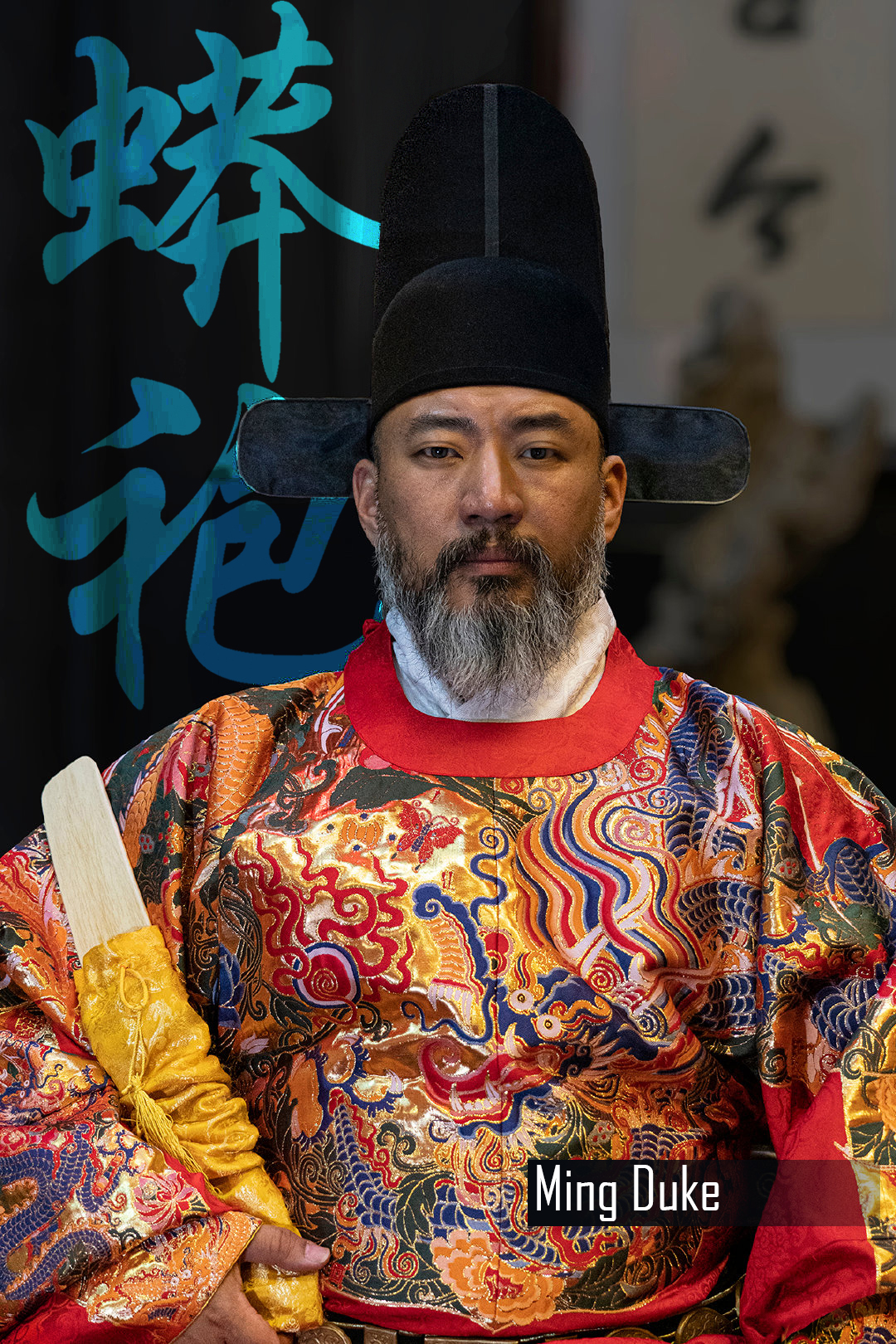Shang Dynasty Warrior: 殷商武士
Reenactor: 折冲府-胖虎
Music: Ballad of the Sun Crow
A hypothetical reconstruction of a Shang dynasty warrior. He carries a long ge dagger axe which can be used with 2 hands (there's argument that ge for shielded warriors are actually 1 handed.) He carries a large leather reinforced wicker shield. He wears a one-piece lacquered leather breastplate. He wears an elaborate bronze helmet with animal motif. He wears a bronze mask secured via a strap and protected with a flap.
Late Shang (red), ~1100 BC. The Shang presided a long lasting dynasty that was conservatively said to have lasted over 500 years. A resounding Central Plains power the Shang vigorously expanded and politicked across the region, straddling the northern reaches beyond the Yellow River and as far south as the Yangtze basin. In time Zhou (blue) once its vassal rebelled and toppled the Shang- in a war that birthed the concept of the Mandate of Heaven.
The quality of the breastplate varies depends on the animal since during the Shang, aside from oxen, rhinos and elephants both roamed the Yellow River basin. He wears a bronze helmet furnished with elaborate animal motifs designs.
Middle: early Chinese shields, Shang and early Zhou shields are wicker frames covered by decorated leather. Some of the earliest pictographs and letters featuring warriors and shields displayed shields with a prominent central spine that extended well above and under the main body of the shield. Shang Dynasty bronze mask did exist, but it’s uncertain how widespread it is, if it was worn in battle or only worn for ritualistic rites. They are not funeral because they have breathing holes and also openings for straps.
EXEMPLIARY BRONZE MAKERS
Beside their martial and organizational prowess, the Shang were dynamic innovators and metalsmiths: bronze forging, writing, and chariots all appeared during the Shang. Despite being new adaptors of bronze forging the Shang immediately turned what is today's Zhengzhou- into a massive industrialized hub for bronze forging.
Shang was able to achieve a rich level of material culture even early in the dynasty, with many neighboring states to the south adopting either Central Plain forged bronze vessels or near exact duplicates. Although there was at least 1 contemporaneous state in the vicinity that was able to match Shang's preeminent bronze forging~ Sanxingdui.
A Shang chariot. The design was retained well into early Zhou. These were light nimble platforms with room for 2 riders. A chariot driver, often the lord- and his bodyguard. By the mid- late Shang, they adopted the spoked chariot. Despite being the 1st Chinese dynasty to adopt chariots the Shang vigorously incorporated them in their constant campaigns.
Art by: ZHIJING YOU
A Shang dynasty warrior: By the late Shang dynasty and early Zhou cuirasses of bronze were fitted for heavy warriors, likely charioteers. The warrior also carries a bow and a quiver, as well as a short sword and elaborate bronze axe that marked his rank.
There were also many cases of such frontal bronze fittings of animal heads that were placed over leather backings behind it. However in those archeological finds the leather were usually decomposed leaving only the frontal animal cover behind.
Shang dynasty helmets: Above: Shang helmet unearthed from Anyang, Henan. Below: Examples of discovered Shang dynasty helmets. Some included frontal bronze motifs fitted over a raw hide helmet. Others included fully forced bronze helmets with a crest.
Above: Frontal Helmet Decorations. Typical features of the mask include large, protuberant eyes; stylized depictions of eyebrows, horns, nose crest, ears, and two peripheral legs; and a line of a curled upper lip with exposed fangs and no lower jaw. The name taotie (“glutton”), which came into use by the 3rd century BC, was probably inspired by the fact that the monster is usually portrayed as an ever-devouring beast. The function of the taotie motif has been variously interpreted: it may be totemic, protective, or an abstracted, symbolic representation of the forces of nature. The motif was most common during the Shang and early Zhou dynasties.
FOR AN ARTICLE THAT COVERS THE YELLOW RIVER REGION BEFORE THE SHANG- CHECK OUT THIS ARTICLE ABOUT THE YELLOW RIVER CIVILIZATIONS IN THE AREA.
FOR A MORE DETAILED COVERAGE OF THE SHANG AND ITS CLOTHING CHECK OUT THIS ARTICLE DEVOTED TO THE SHANG.
FOR AN EXTENSIVE COVERAGE OF THE CLIMACTIC FALL OF THE SHANG- AND THE WAR THAT BIRTHED THE CONCEPT OF MANDATE OF HEAVEN, CHECK OUT THIS ARTICLE ABOUT THE SHANG- ZHOU MANDATE'S WAR.
➢ ☯ Futsunomitama
➢ ☯ MK Celahir
➢ ☯ Muramasa
➢ ☯ Thomas Vieira
➢ ☯ BurenErdene Altankhuyag
➢ ☯ Stephen D Rynerson
➢ ☯ Peter Hellman
➢ ☯ SunB
Ceremonial Shang dagger axe. Even before the Shang the Yellow River region produced exquisite turquois artifacts.

















.jpg)






.jpg)












Comments
The Shang are to China what the Sumerians are to the West. The Shang didn't have surnames, they didn't have a Shi class, they practiced human sacrifice, women had a high status, etc. So un-Chinese.
https://upload.wikimedia.org/wikipedia/commons/6/60/Comparison_of_Chinese_characters_for_autumn.svg
By late Shang it was crystalizing into a lot of the more formal non-pictographic scripts we see in traditional Chinese. I'd argue there's far more continuation of China to China from Shang to Zhou than say~ Myceanean Greece (Linear B) to Doric Greece, especially given how Greek letters went through major changes and old scripts are still very difficult to decipher and utterly unintelligible to modern Greek readers. And Greeks had to relearn how to write in a totally new alphabet in the Greek dark ages.